Category Touring cars Inaugural season 2000 | Country Europe Constructors AudiMercedes-BenzBMW | |
 | ||
2014 bmw m4 dtm the deutsche tourenwagen masters dtm german touring car masters
The Deutsche Tourenwagen Masters (DTM, German Touring Car Masters) is a touring car series using a silhouette racing car based in Germany, but also with rounds elsewhere in Europe.
Contents
- 2014 bmw m4 dtm the deutsche tourenwagen masters dtm german touring car masters
- Race 1 highlights dtm spielberg 2016
- The new DTM 2000
- DTM 20002003
- Ups and downs for Opel
- Audi joins DTM in 2004
- DTM in 20052007
- DTM in 20082013
- DTMSuperGT unification
- NASCAR Holdings United SportsCar Racing
- Race format
- Chassis
- Engines
- Fuel
- Year 2011 final
- Year 2012
- Year 2013 2014
- Year 2015 2016
- Year 2017 2018
- DTM drivers
- Scoring systems
- Fatal accidents
- References
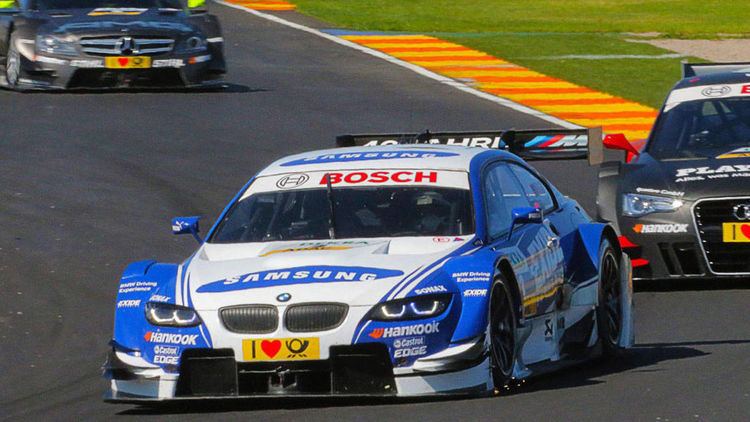
From 2000 onwards, this new DTM continued the former Deutsche Tourenwagen Meisterschaft (German Touring Car Championship) and ITC (International Touring Car Championship) which had been discontinued after 1996 due to high costs.
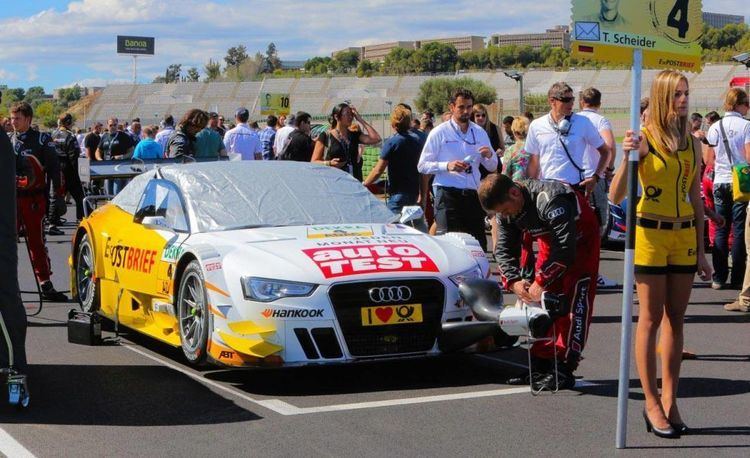
Race 1 highlights dtm spielberg 2016
The new DTM 2000
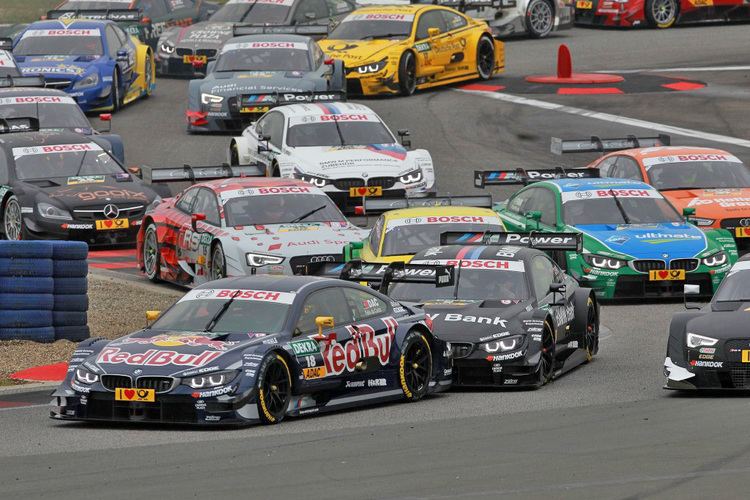
During the ITC era a large proportion of the revenue generated by the championship went to the FIA, with the result that less went to the teams who subsequently complained of little return on their increasingly large investment in the high-tech series. Since 1997 many ideas have been discussed in order to find a compromise for rules of a new DTM. Opel put the primary emphasis on cost control, Mercedes-Benz supported expensive competitiveness in development, BMW wanted an international series rather than one focused on Germany only, while Audi insisted on allowing their trademark quattro four-wheel drive (despite running the rear wheel drive Audi R8) in sports car racing.
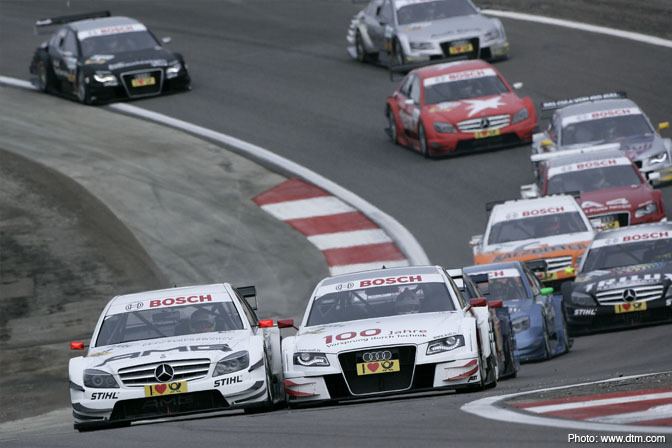
The DTM returned in 2000 as Mercedes and Opel had agreed to use cars that were based on the concept car that was shown by Opel on various occasions, e.g. the 1999 24 Hours Nürburgring where Opel celebrated its 100th anniversary. The series adopted the format of the 1995 championship, with most rounds held in Germany with occasional rounds throughout Europe, but having learnt the lessons of the ITC disaster, the ITR constantly strived to keep costs in the series from exploding to unreasonable levels, and to keep the championship firmly tied to its German roots. As too many races were planned outside Germany, no Championship (Meisterschaft) status was granted by the DMSB, and the DTM initials now stand for Deutsche Tourenwagen Masters (German Touring Car Masters).
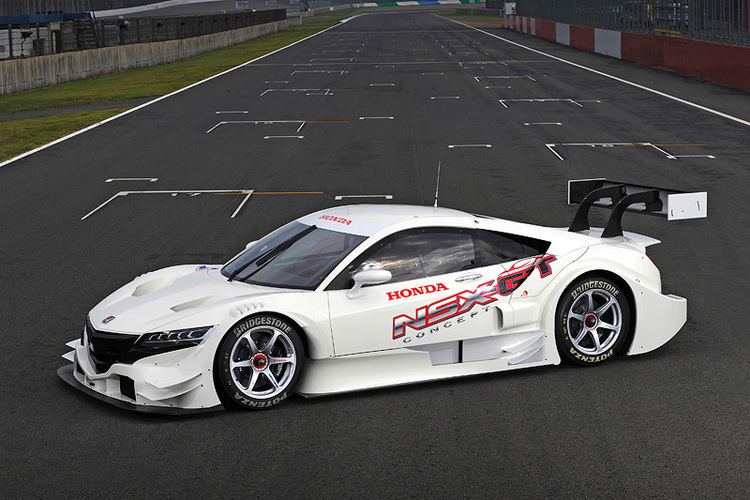
Alfa Romeo, who at the time were mounting successful campaigns in the European Touring Car Championship, did not return to the series. BMW was also involved in the ETCC and was not satisfied with a championship only for Germany. Audi did not enter as they insisted on using their signature quattro 4WD.
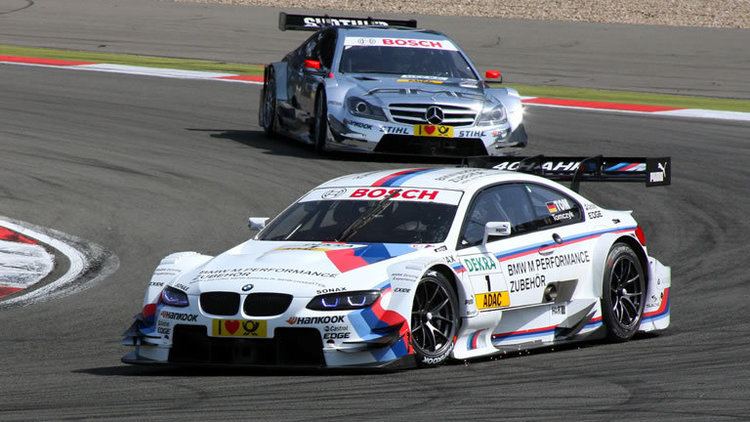
Unlike the previous incarnation which primarily used sedan models like the Mercedes-Benz W201, the new DTM featured only 2-door coupés. Opel used the upcoming Coupé version of the Astra as in the concept car, and Mercedes the CLK model which already was used as a pattern for the Mercedes-Benz CLK-GTR.
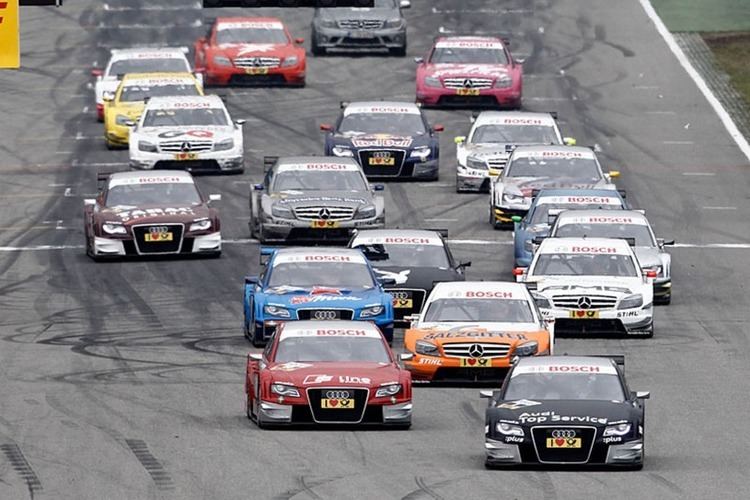
Attempts of Zakspeed to enter with a car looking like a Volvo C70 were not approved, but the motorsport arm of the Bavarian tuning company Abt Sportsline was allowed to enter on short notice. The 1999 STW-Supertouring-champion Christian Abt could not defend his STW title as this series was also discontinued, with Opel moving into DTM. Abt used the Audi TT as a basis, as Audi had no suitable 2-door coupé, even though the dimensions of this car did not fit into the rules.
DTM 2000–2003
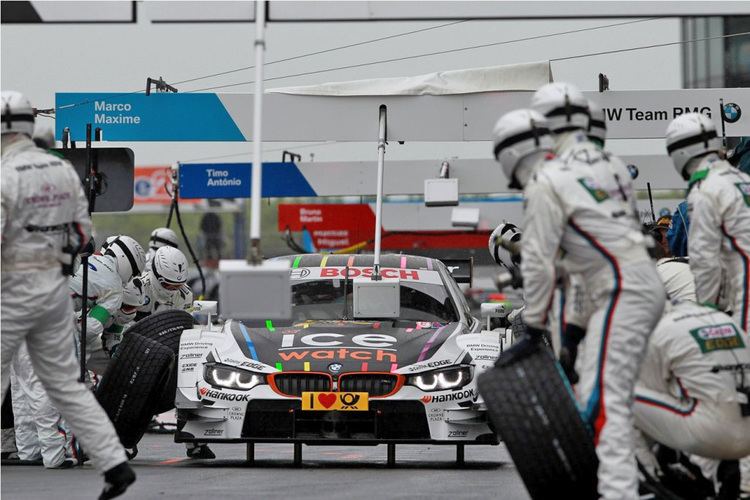
In May 2000, the new DTM started with the traditional Hockenheimring short track version. Some cars still had no or few sponsorship decals. While Opel could match the speed of most Mercedes in the 2000 season, the hastily developed Abt-Audis were mainly outclassed. As the TT shape had rather poor aerodynamic properties, Abt was allowed to use a stretched form later. Further benefits like a higher rear wing helped the Abt-Audi TT-R win the DTM championship in 2002 with Laurent Aïello.
Ups and downs for Opel
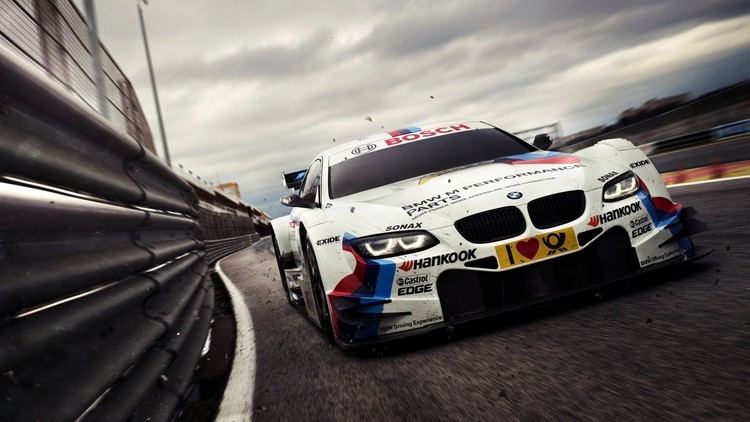
In 2000, Manuel Reuter came second in the championship. After that year, no Opel driver was among the top three, with few podium finishes and no victory for the disappointing "lightnings". On the other hand, it was Opel team boss Volker Strycek who brought a new highlight to the fans, by racing a modified DTM car on the traditional old version of the Nürburgring in 2002, 20 years after the top classes had moved to the modern Grand Prix track, and 10 years after the old DTM stopped racing there. The Opels did not win in most of their entries in the VLN endurance races as they were mainly testing, but the speed was impressive, and the fans loved it. They won however the 2003 Nürburgring 24 Hours against factory efforts by Audi (Who also ran a DTM-spec TT) and BMW (Who ran an ALMS-spec M3).
Audi joins DTM in 2004
After their successes with the Audi R8 and the official support of the Abt-TTRs at the Nürburgring, Audi finally joined the DTM as a factory entry in 2004. The three constructors involved decided to switch to saloon bodies. The road models used as patterns since 2004 are the Audi A4, Opel Vectra GTS and the Mercedes-Benz C-Class. All dimensions, like wheelbase, are identical in order to provide equal opportunities without the actual design of the road cars having any influence.
DTM in 2005–2007
The championship suffered a setback in 2004 when long-time also-ran Opel decided to pull out of the series at the end of the 2005 season, as part of a large cost-cutting operation in General Motors' European division. Initially the gap looked set to be filled by MG Rover, however their plans to enter the series were cancelled after the company collapsed in April 2005. Audi and Mercedes fielded 10 cars each in 2006, but the important television deal with the major television station ARD required three marques in 2007. Rumours surfaced that Alfa Romeo would return to the DTM in 2007. These rumors were helped by Alfa Romeo Sport boss Claudio Berro being seen in the Barcelona paddock. It was also thought that Alfa's possible return could be the reason why the 2007 DTM calendar started one month later than normal, to give Alfa Romeo extra time to make a DTM car. However, this did not happen.
DTM in 2008–2013
The DTM carried on with only two manufacturers. There were some rumours regarding entries by various manufacturers (e.g. Citroen, Lancia, Renault or Jaguar), but they never materialized. The years 2008 and 2009 were marked by the dominance of Audi. Timo Scheider took the driver's championship in these years, giving Mercedes the runner-up position (Paul di Resta in 2008 and Gary Paffett in 2009). As of 2010, Mercedes have finally bridged the gap to Audi, as Paul di Resta has won the 2010 championship driving for AMG Mercedes.
In 2011 and 2012, the DTM held a Race of Champions-style exhibition event in the Munich Olympic Stadium.
2012 was the year BMW made return to their series after twenty years away, and won the drivers', teams', and manufacturers' titles in their first year after a 20-year hiatus.
Audi has switched from the A4 to the A5 in 2012 and to the RS5 in 2013.
DTM—SuperGT unification
In March 2010, GT Association (the governing body in Super GT series in Japan) reported the ITR are starting to unite the mechanical regulation with Japan's GT500 (Super GT's upper class), and NASCAR's Grand American Road Racing Association Grand Touring division to form a new Grand Touring specification. In October 2012 a cooperation deal between DTM and Super GT was signed in Tokyo. The agreement regarding the use of the 'New DTM' regulations by Japan's Super GT begins in 2014 and runs – for the time being – for four years. DTM is set to ditch V8 engines in favour of two-litre turbos by 2016 at the latest, which Super GT had implemented in 2014.
NASCAR Holdings / United SportsCar Racing
On 27 March 2013, the ITR and NASCAR Holdings' road racing division, United SportsCar Racing, announced after years of planning, a North American DTM is scheduled to start between 2015 and 2016 based on the 2014 DTM regulations.
Race format
When the series returned, it used a similar format to 1996: two races of 100 kilometres, with a short break between them. In 2001 and 2002 there was a short race of 35 kilometres as well as a long race of 100 kilometres, which included one pit stop and gave points for the top 10 as in earlier seasons. From 2003 to 2014 there was only one race, which had a distance of about 170 kilometres, and two mandatory pit stops.
For 2015 season a new race format has been introduced. Race weekend consists of 40-minute (Saturday) and 60-minute (Sunday) races. On Saturday's race pit stop is optional. While on Sunday's race pit stop is mandatory and all the four tyres must be changed. Both races have the same scoring system.
Chassis
The DTM is a touring car. The championship controls and specifies the chassis and engine manufacturers that teams are allowed to use each season. The league's choice of manufacturers are changed every three years. Currently, Audi, BMW and Mercedes-Benz provides the cars to all teams, with Audi, BMW and Mercedes-Benz providing the engines. Opel was provided car and engines in 2000-2005 but left at the end of the 2005 season.
The cars are supposed to be fast and spectacular, while still fairly cheap to build and run. All DTM race cars have RWD and 4.0 L V8 engines which are air-restricted to 460 hp, no matter if similar layouts or engines are available in the road cars. Instead of the road car bodies, unrelated purpose-built chassis are used, which are closer to prototype racing. Many drivers have in fact described the handling of the cars as closer to single seater racing cars than road cars. Only the roof sections of the road cars are put on top of the roll cages, and lights and other distinctive design features are used in order to provide a resemblance to the road cars. Also, in order to save money and provide close racing, many common parts from third party specialist are used, like transmission (from Hewland), brakes (from AP Racing), and Hankook tyres since 2011 and on (previously Dunlop was a DTM tyre supplier in 2000 until 2010 season). The all-important aerodynamic configurations are tested in wind tunnels before the season, brought to an equal level, and kept that way throughout the season.
DTM cars adhere to a front engine rear-wheel-drive design. A roll cage serves as a space frame chassis, covered by a CFRP crash elements on the side, front and rear and covered by metallic bodywork. They have a closed cockpit, a rear wing, and an aerodynamic such as rear wing: two-element wing with laminated gurney. Inclination adjustable from 0 to 25°. Special diffusors, front and rear. Underfloor with 30 mm high skid block. Two permissible areas for flaps at the vehicle’s front end. DTM cars have included a Drag Reduction Systems since the 2013 season (similar to Formula One) for overtaking reasons.
For the safety equipment, all DTM cars seating uses removable carbon-fibre shell driver's seat with 6-point seat belts.
Engines
The cars are powered by indirect fuel injection V8 engines, with aluminium alloy blocks, and a 2xDOHC valvetrain actuating four-valves per cylinder, and limited to 4,000 cc (244 cu in) displacement. DTM car's engines are producing 460 hp (343 kW; 466 PS) power output at 8500 rpm. Audi, BMW and Mercedes-Benz are currently providing DTM engines with the manufacturers respectively.
DTM engines are rev-limited to 9,000 rpm. The valve train is a dual overhead camshaft configuration with four valves per cylinder. The crankshaft is made of alloy steel, with five main bearing caps. The pistons are forged aluminum alloy, while the connecting rods are machined alloy steel. The electronic engine management system is supplied by Bosch MS 5.1, firing a CDI ignition system. The engine lubrication is a dry sump type, cooled by a single water pump.
The current 4.0 L (244 cu in) V8 engine normally-aspirated 90-degree configuration will be used as a required engine configuration until at least 2018 season. All DTM cars will switch to all-new 2.0 L (122 cu in) inline-4 cylinder turbocharged direct-injection engine from 2019 season while the current coupé-style cars will remain in 2019 beyond.
Fuel
Since July 20, 2005, the fuel of all DTM cars are currently provided by Aral Ultimate 100 RON unleaded racing gasoline started from Nürburgring round until end of 2009 season. From 2010 season, Aral Ultimate updated their fuel octane rating from 100 to 102 RON for all DTM cars. From 2000 to 2003, Agip was providing an unleaded fuel for all DTM cars. From 2004, all DTM cars are fuelled by Shell until mid-2005.
All DTM cars received the same high-performance fuel as the Aral customers, because Aral Ultimate 102 is fueled by every DTM race cars.
In addition to the unique composition, the top fuel of Aral has a further advantage for the DTM engineers: consistently high quality - throughout the season. This allows the teams to adjust their engine mapping precisely to the fuel, thus enabling drivers to access the full potential performance of their cars on the race track.
Year 2011 final
Year 2012
Year 2013-2014
Year 2015-2016
Year 2017-2018
Machine
Engine
DTM drivers
The drivers have been a mixture of young and older drivers, including well known former Formula One drivers David Coulthard, Bernd Schneider, Allan McNish, Jean Alesi, Heinz-Harald Frentzen, Ralf Schumacher, JJ Lehto, Pedro Lamy, Karl Wendlinger, Emanuele Pirro, Stefano Modena and two-time F1 world champion Mika Häkkinen. Others, such as Laurent Aïello, Tom Kristensen, Dindo Capello, Frank Biela, Marco Werner, Lucas Luhr, Alexandre Prémat, Yves Olivier, Jaroslav Janiš, and Alain Menu have made their career racing in sports cars and touring cars.
Increasingly, the DTM is being used by young guns such as Robert Wickens and Gary Paffett to jump-start their racing career in single-seaters. Wickens was in the 2012 Mercedes young driver program and in his first year of DTM. This strategy appears to have worked well for Christijan Albers, who built a reputation by finishing second and third in the 2003 and 2004 championships with Mercedes-Benz and then graduated to Formula One in 2005. He came back in 2008, but this time driving for Audi. After winning the championship in 2010, Paul di Resta raced from 2011 until 2013 for Mercedes-engined Formula One team Force India. He has now returned to the Mercedes DTM team. Pascal Wehrlein, who has won the championship in a Mercedes car in 2015 is now racing for Mercedes-engined team Manor Racing and as a testing driver for the Mercedes works team.
Gary Paffett has also used his championship win to gain a test with McLaren, and they signed him as permanent test driver for 2006. This prevented Paffett from defending his title in 2006, however he thought that it will be a springboard for a race seat during the 2007 Formula One season. The plan failed however, and Paffett returned to DTM in 2007, but in a 2006 specification car.
Four female drivers have taken part in the championship. In 2006 Vanina Ickx started racing for Audi and Susie Wolff for Mercedes. In 2008 Ickx was replaced by Katherine Legge, who was subsequently replaced for the 2011 season by Rahel Frey. In 2014 there were no female drivers in DTM.
Scoring systems
Fatal accidents
As of 2016 there are no fatal accidents in Deutsche Tourenwagen Masters.
